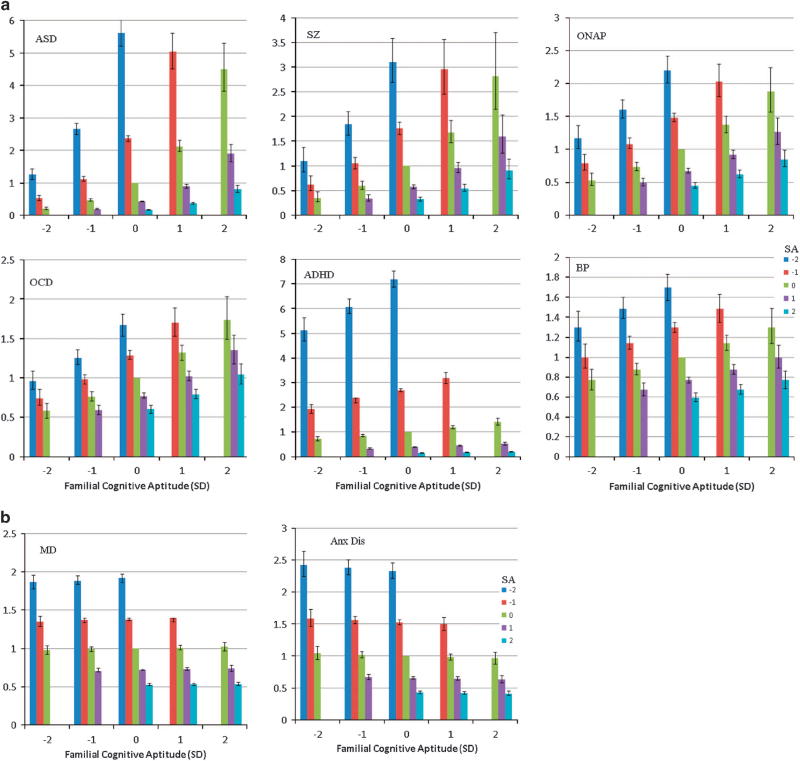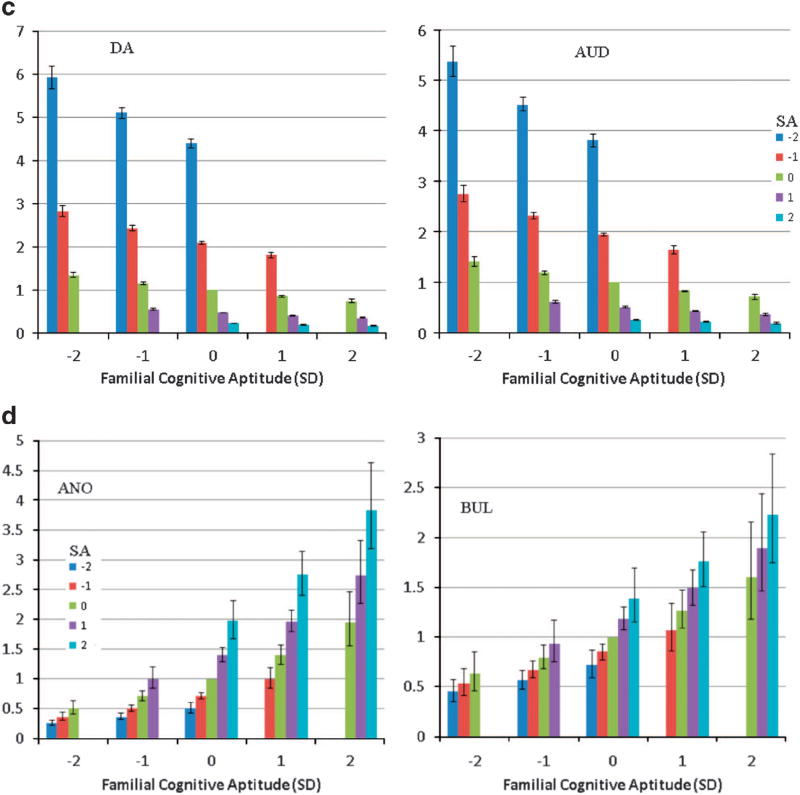Figure 1.
(a) The hazard ratio (and 95% confidence intervals) for first registration for six neurodevelopmental psychiatric disorders (ASD, autism spectrum disorder; SZ, schizophrenia, ONAP, other non-affective psychoses; OCD, obsessive compulsive disorder; ADHD, attention deficit hyperactive disorder; BP, bipolar disorder) in 1 140 608 Swedish individuals born 1972–1990 as a function of their school achievement at age 16 and their familial cognitive aptitude calculated from school achievement in full siblings and cousins and educational status in parents. s.d.—standard deviation. The X-axis reflects the familial cognitive aptitude divided into five groups: very low (− 2 s.d. below the mean), low (−1 s.d. below the mean), average, high (+1 s.d. above the mean) and very high (+2 s.d. above the mean). The Y-axis reflects the school achievement levels, in s.d. units, of individuals within each family type. Not all possible combinations are presented because some potential groups (e.g. familial cognitive aptitude of +2 s.d. and school achievement of −1 or − 2 s.d.) were too rare to calculate with confidence. (b) The hazard ratio (and 95% confidence intervals) for first registration for two internalizing psychiatric disorders (MD—major depression and Anx Dis—anxiety disorders) in 1 140 608 Swedish individuals born 1972–1990 as a function of their school achievement at age 16 and their familial cognitive aptitude. For further details, see legend to (a). (c) The hazard ratio (and 95% confidence intervals) for first registration for two externalizing psychiatric disorders (DA—drug abuse and AUD—alcohol use disorders) in 1 140 608 Swedish individuals born 1972–1990 as a function of their school achievement at age 16 and their familial cognitive aptitude. For further details, see legend to (a). (d) The hazard ratio (and 95% confidence intervals) for first registration for two eating disorders (Ano—anorexia nervosa, Bul—bulimia nervosa) in 1 140 608 Swedish individuals born 1972–1990 as a function of their school achievement at age 16 and their familial cognitive aptitude. For further details, see legend to (a).


